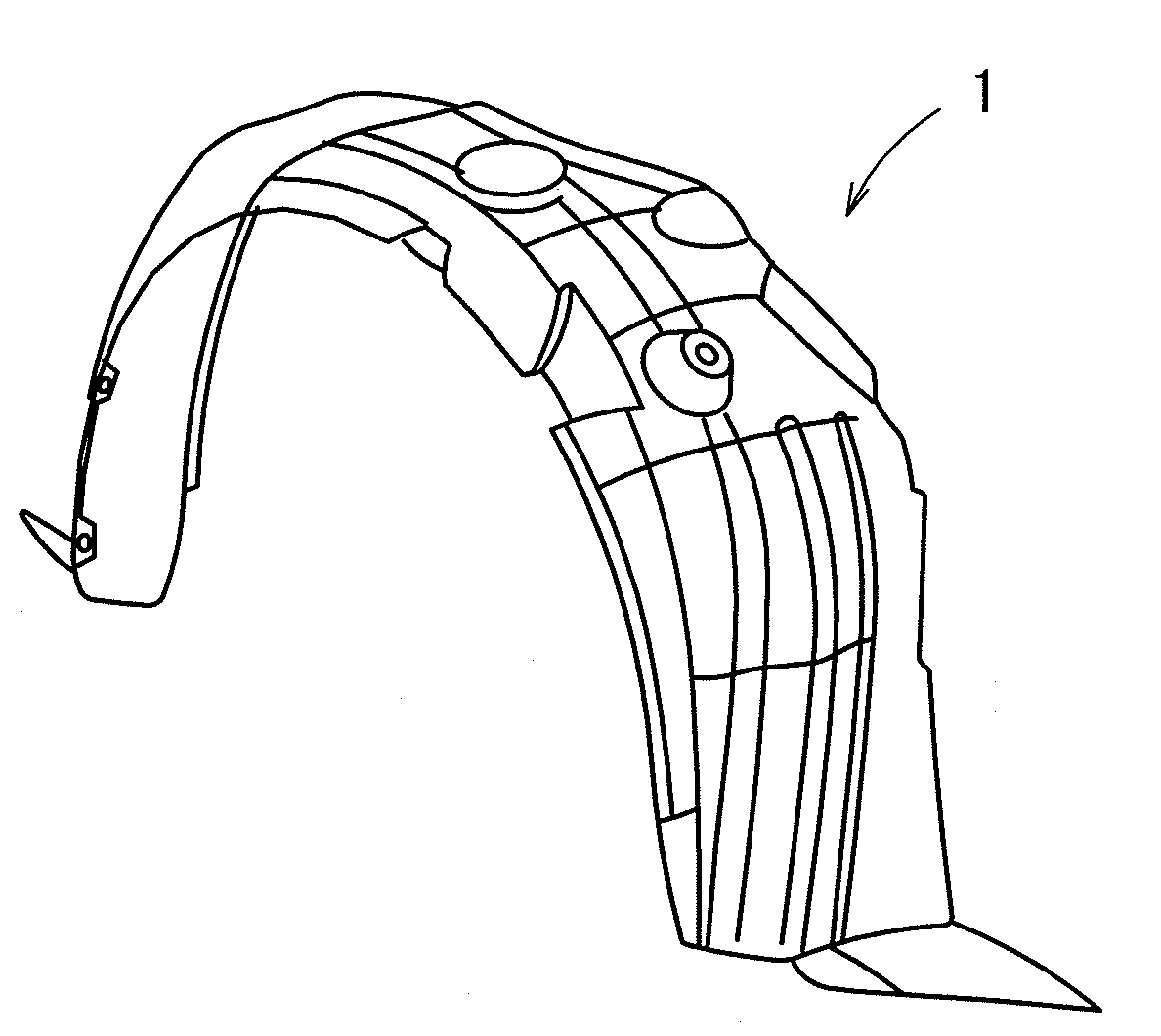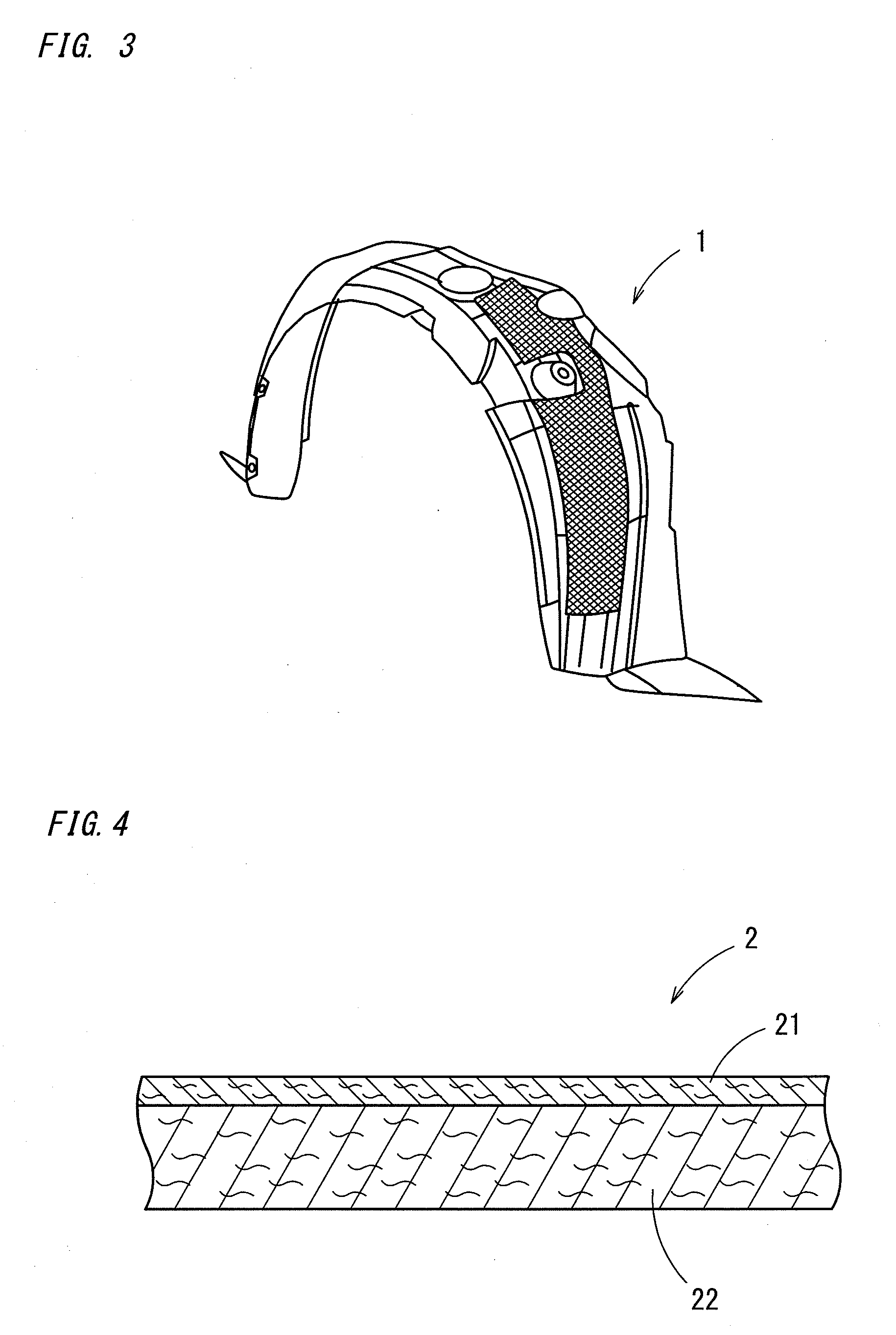Fender liner and method for producing the same
- Summary
- Abstract
- Description
- Claims
- Application Information
AI Technical Summary
Benefits of technology
Problems solved by technology
Method used
Image
Examples
example 1
[0074]1. Production of Fender Liner
[0075]A first nonwoven fabric having an amount of mass per unit area of 250 g / m2 and a thickness of 1 mm was obtained by a thermal bonding method, using 30 mass % of a polyethylene terephthalate (PET) fiber as a resin fiber; 30 mass % of a shell and core fiber including a PET as a core with a melting point of 260° C. and a PET as a shell with a melting point of 110° C., as a binder for binding; and 40 mass % of a thermosetting resin binder. A second nonwoven fabric having an amount of mass per unit area of 750 g / m2 and a thickness of 3 mm was obtained by the thermal bonding method, using 50 mass % of a polyethylene terephthalate (PET) fiber as a resin fiber; and 50 mass % of a shell and core fiber including a PET as a core with a melting point of 260° C. and a PET as a shell with a melting point of 110° C., as a binder for binding.
[0076]Subsequently, the first nonwoven fabric and the second nonwoven fabric were intertwined and integrated by a needl...
PUM
| Property | Measurement | Unit |
|---|---|---|
| Percent by mass | aaaaa | aaaaa |
| Percent by mass | aaaaa | aaaaa |
| Percent by mass | aaaaa | aaaaa |
Abstract
Description
Claims
Application Information
 Login to View More
Login to View More - R&D
- Intellectual Property
- Life Sciences
- Materials
- Tech Scout
- Unparalleled Data Quality
- Higher Quality Content
- 60% Fewer Hallucinations
Browse by: Latest US Patents, China's latest patents, Technical Efficacy Thesaurus, Application Domain, Technology Topic, Popular Technical Reports.
© 2025 PatSnap. All rights reserved.Legal|Privacy policy|Modern Slavery Act Transparency Statement|Sitemap|About US| Contact US: help@patsnap.com



